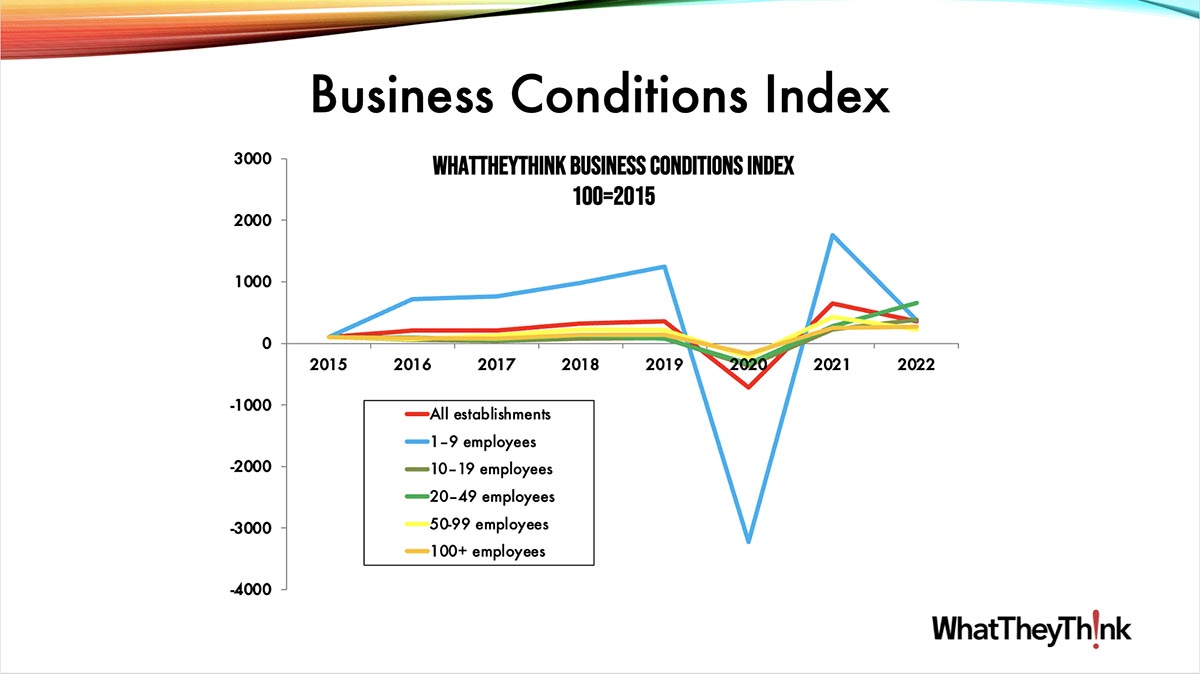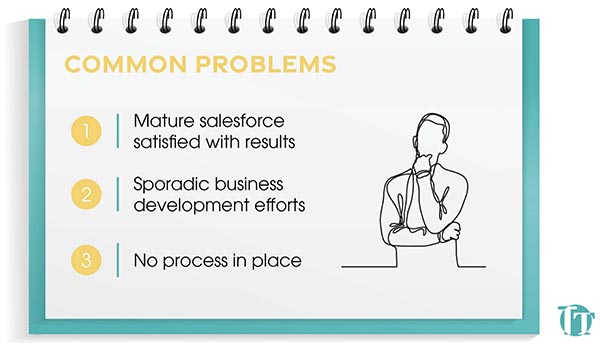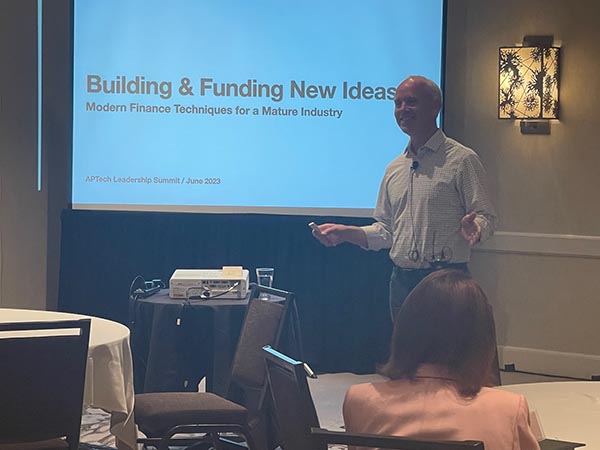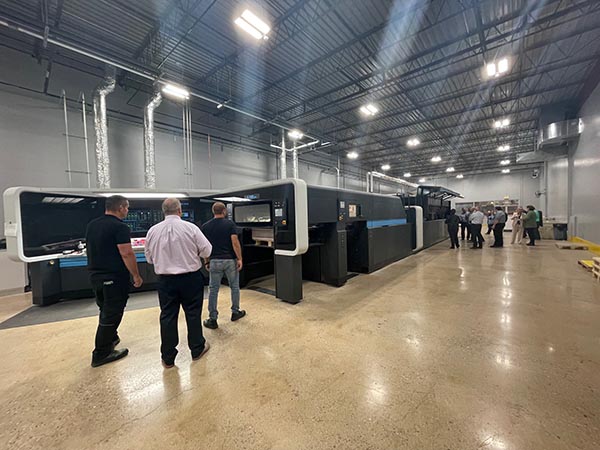
By Julie Shaffer and Richard Romano
A topic that rarely comes up at industry events is leadership. How do we not only act as effective leaders for our organizations, but how do we also help nurture the next generation of leaders? Those questions and others were addressed at APTech’s LeadingPRINT Summit, held June 14 and 15 at the Westin O’Hare in Rosemont, Ill. The event comprised two days of formal presentations and informal discussions of the biggest challenges facing the industry and how to address them.
A two-hour pre-conference workshop ran on June 14, facilitated by leadership coach Ken Garner, focusing on what he called “Peak Performance” for managers. Gallup Research has found that only 32% of U.S. workers are actively engaged in their work, while 18% are actively disengaged, while at the same time $322 billion in turnover and lost productivity costs can be attributed to employee burnout. Meanwhile, Gartner Research has found that 68% of senior HR leaders reported that their managers were overwhelmed, while only 14% of these companies took steps to improve the situation. So the workshop discussion centered around how today’s work environment has changed, and how to successfully manage a team today, especially given that the workforce is experiencing a generational turnover—Boomers and Gen Xers are giving away to Millennials and Gen Zers, all of whom have different job-related attitudes and expectations. As a result, Garner said, these new realities require organizational leaders to significantly update their approach to building organizational cultures and effectively managing employees—hence his “Peak Performance” series.
The conference proper kicked off Thursday morning with WhatTheyThink’s Richard Romano sharing the results of the Fall 2022 Print Business Conditions Survey and the 2023 Printing Outlook report. The upshot is that after the pandemic year and the two years of recovery, the industry is “back in the black,” with 2022 being the best year for the industry since 2019. Expectations for 2023, though, are muted as business leaders—in the print industry and elsewhere—are convinced there is a recession on the horizon, despite there being little indication of one. Other important trends that Romano identified include an increasing interest in automation—be it software or hardware—the need to diversify into different types of print products, and a growing investment in production inkjet capabilities (like Canon ProStream). Despite the wealth of good news, there is no escaping the fact that we are seeing a continued erosion in the demand for print—which high consumables prices (especially paper) are only exacerbating.

Following the Print Outlook was keynote presenter Gary Laney, a “serial entrepreneur,” who shared some compelling information on developing a strategic sphere of influence and how to assess connections and relationships strategically and that influence has to be earned. “Strategic influence is learning how to cultivate relationships with influential business people from your industry who can be strategic to your business,” he said. “Developing relationships with these types of influencers can have an enormous impact on your business because of the potential sustaining relationships you can experience with them.” All conference attendees also received a complimentary signed copy of Laney’s recent book The Power of Strategic Influence.

Next up, Linda Bishop of Thought Transformation turned to the topic of sales, with “What the CEO Needs to Know (and Fox) About Sales Today.” Traditional “fixes” to broken sales processes include hiring more salespeople, preferably with an existing “book of business,” and trying to sell more solutions to existing clients. But should you be looking for something better and more sustainable? Bishop addressed some of the challenges with business development—too few new leads, sporadic, inconsistent outreach, and too few touches. She outlined some best practices for sales managers, such as tracking leading indicators as they pertain to leads, such as the number of leads, the number being actively worked, and the number of opportunities with new accounts. Another best practice is to define your business development cycle and identify who in the organization. Is responsible for what and in what timeframe. Then, you allocate the proper resources and periodically audit the results to find any gaps, and then invest the time to help build sustainable practices.

The final session of the morning featured Jon Budington, president of More Vang, who talked about how he went all-in on developing a new software platform to support a market he serves (higher education) and how it has exponentially grown the value of his business. He spoke at length about the various mechanisms there are to find investors, secure financing, and grow a business—especially a software business—detailing the pluses and minuses of each.

After lunch, the final session was led by Dr. Susan Cain, who addressed another of our industry’s big challenges: how a printing company can make itself appealing to a new generation of employees, and recruit and retain them. According to Dan Wilson, Managing Director of the Accrediting Council for Collegiate Graphic Communications, student education in this field has changed. There are around 2,000 graphic design programs in the US, but only 20 teach graphic production and management. No college program calls itself a printing program, and there is no specific program for press operators. As a result, said Dr. Cain, Dan recommends that “your organization should approach these schools to encourage enrollment—divert some scholarship money for this to Graphic Production and Graphics Management.” The big need is for the production and management of printing—sales, customer service, and manufacturing—and there are not enough students going into these. “Jobs in the industry are sometimes seen as low-paying, low-skilled, or lacking growth opportunities,” she said. “We know this is not the case, but it is a perception that can be difficult to overcome.” At the same time, once-male-dominated areas like printing, prepress, and packaging production—have seen a steady decline in the number of men working in these jobs. “This shift presents an opportunity to diversify print and graphic communications,” said Dr. Cain, “but increasing diversity, equity, and inclusion in premedia, print, and packaging, media production, bindery, and finishing will depend on fresh ideas and industry collaboration.” Some ideas:
- Promote the industry as a good career choice for women and minorities.
- Highlight the industry’s commitment to diversity and inclusion.
- Offer scholarships and other financial assistance to underrepresented people interested in pursuing careers in print and graphics.
- Partner with organizations that work to promote diversity and inclusion in the workplace.
- Invest time and money in creating a more welcoming and inclusive workplace culture.
- Offer a more flexible work environment and remote work opportunities to the people statistically more likely to be the primary parent, caregiver, and, evermore often, breadwinner in their families.

Landa Digital Printing and Canon Production Print were Premier Platinum sponsors of the LeadingPRINT Summit, while Xerox was a Gold sponsor.
On Thursday afternoonbafter the final session, LeadingPRINT Summit attendees headed to Quantum Group, where CEO Cheryl Kahanec conducted a tour of the facility, including demonstrations of the Canon ProStream 1800 and Quantum’s recently installed Landa Nanographic S10P.

While the presentations were highly informative, the interactive nature of the event provided even more value, with both Q&A sessions and between-session networking giving attendees and presenters the opportunity to go beyond the presentation.










Discussion
Join the discussion Sign In or Become a Member, doing so is simple and free